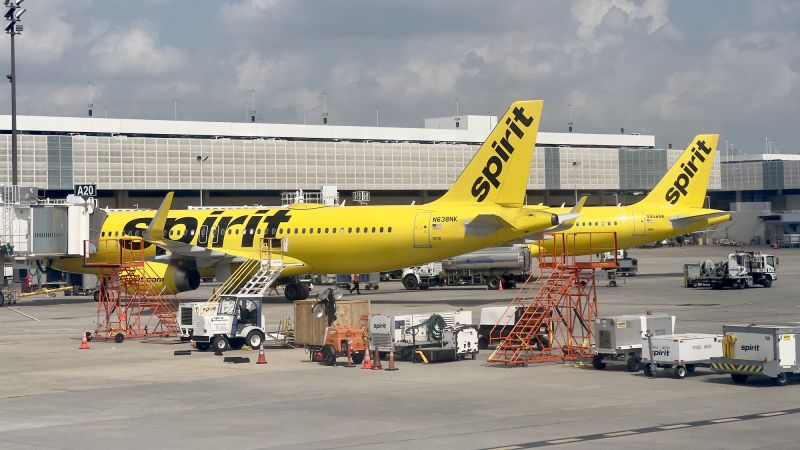Spirit Airlines, often recognized for its vibrant yellow branding, is currently facing significant operational challenges and has raised concerns regarding its ability to sustain itself as a going concern. This development comes just months after the airline emerged from bankruptcy, a process it undertook late last year due to continuous financial losses, unsuccessful merger attempts, and excessive debt burdens. The airline, based in Florida, reported numerous adverse market conditions that threaten to undermine its stability further.
The latest quarterly report elaborated on these troubling developments, highlighting the effect of weak domestic demand coupled with heightened competition in the airline industry, particularly during the second quarter. This combination has culminated in a challenging pricing environment, forcing Spirit Airlines to reevaluate its operational strategies. A significant aspect of this struggle is illustrated by the alarming 40.68% drop in the shares of its parent company, Spirit Aviation Holdings (FLYY), as investors reacted to the news of the company’s precarious standing.
As Spirit Airlines grapples with its financial troubles, the company anticipates that these pressures will persist throughout the remainder of the year. The airline had previously made the tough decision last month to furlough approximately 270 pilots, alongside demoting an additional 140 pilots as part of its measures to conserve cash amidst dwindling revenue streams. These furloughs and demotions indicate a broader trend of operational downsizing that is often employed by companies in distress.
The airline’s turbulent history further complicates its current predicament. After becoming the first significant U.S. carrier to file for Chapter 11 bankruptcy since 2011 in November 2022, Spirit successfully emerged in March 2023, backed by creditor support that enabled a restructuring process. However, the uncertainties that linger around the business model, traveler anxiety due to fluctuations in national policies—such as those instigated during the Trump administration concerning tariffs and budget cuts—have likely acted as deterrents for potential customers, causing them to reassess their travel plans and overall spending.
Adding to Spirit’s woes, a recent communication from its credit-card processing partner has mandated that the airline must set aside additional funds as collateral. The concern is that without these enforced financial measures, the airline risks losing its contract with the processing company, which is due to expire at the end of December 2023. This financial strain only adds another layer of urgency to Spirit’s already precarious situation.
In a bid to improve its financial liquidity, Spirit Airlines has outlined plans to sell or monetize some of its aircraft and real estate assets and is also examining its strategic approach by considering the shedding of excess airport gate capacity. These planned actions illustrate the airline’s attempts to navigate through its financial hurdles. However, the report concludes with a stark warning: uncertainty regarding the company’s ability to maintain minimum liquidity covenants and ongoing negotiations with stakeholders have elaborated significant doubts about Spirit Airlines’ viability as a going concern for the next twelve months.
In summary, Spirit Airlines is encountering a multifaceted crisis that includes diminished customer demand, hefty operational financial commitments, and market pressures that compound its troubles. With its recent history of bankruptcy and continued uncertainty, the airline must act swiftly and decisively to stabilize its operations and regain investor confidence before the situation deteriorates further. If the company fails to navigate these turbulent waters adequately, it could face a precarious future, impacting thousands of employees and millions of customers who depend on its services.











